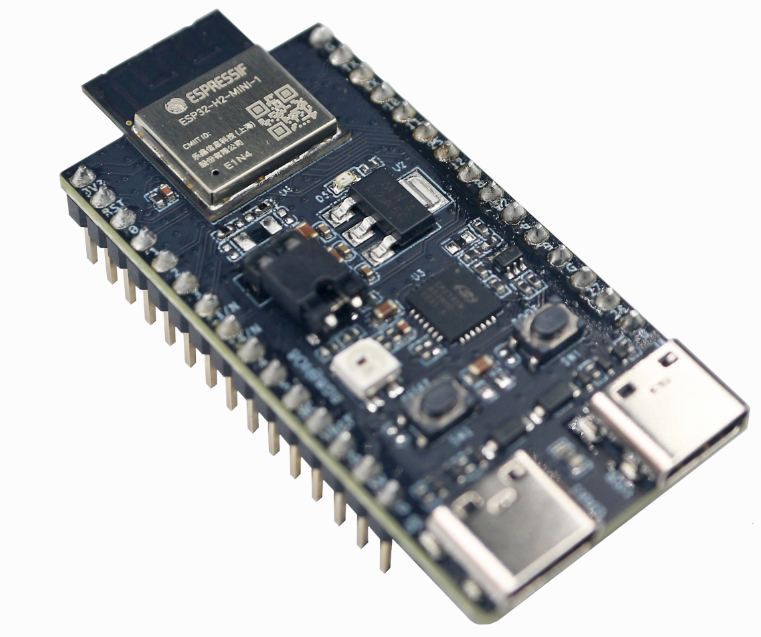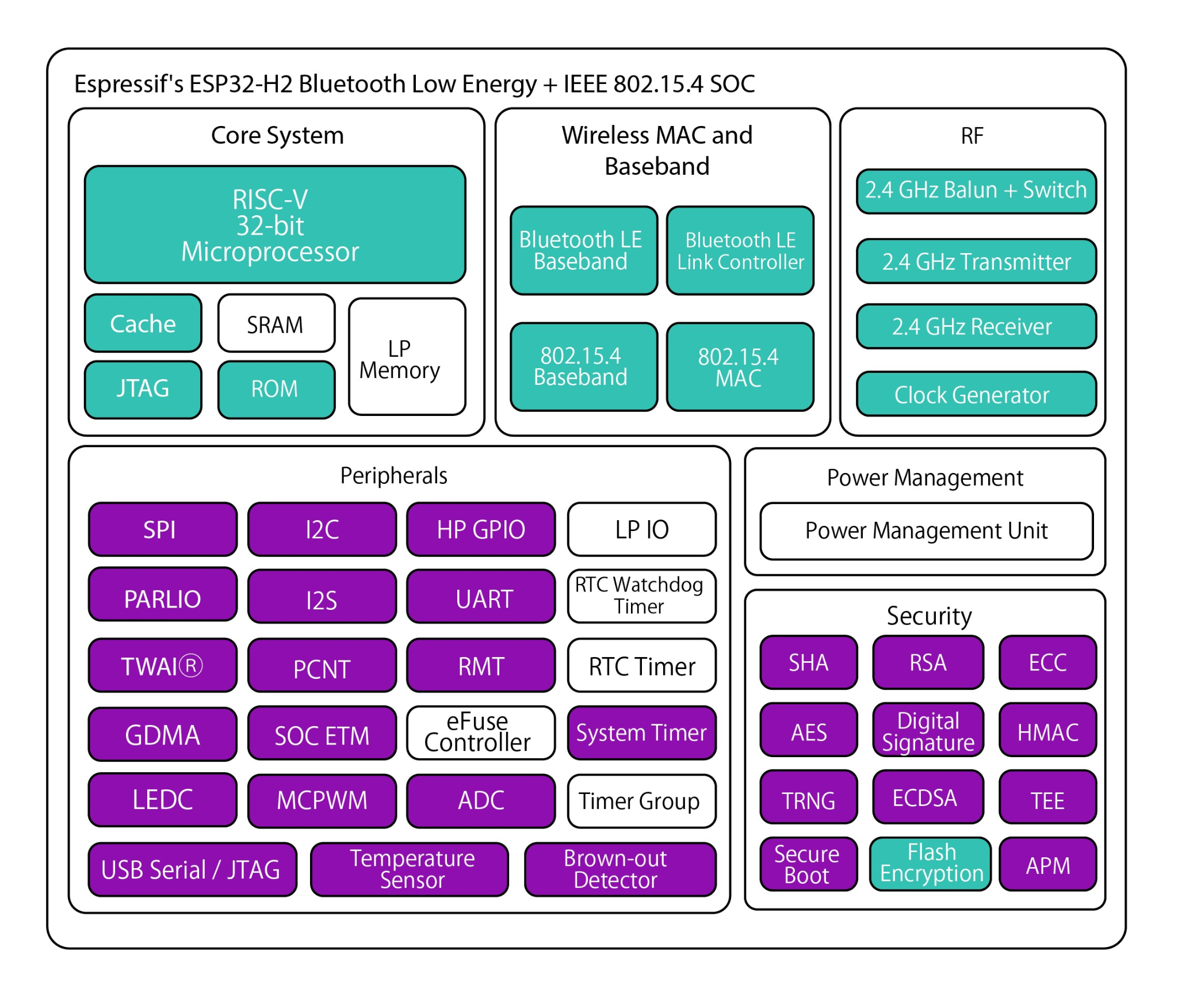ESP32-H
ESP32 H is one of the series of Espressif’s ESP32 series of SoCs. ESP32 H series includes only one chip yet, which is ESP32-H2. It is fabricated for reduced power consumption and secure connectivity. The figure below shows the complete DevKit or development board of ESP32 H having an ESP32-H2 chip on it.

Integrated IEEE 802.15.4
The ESP32-H is designed to support radio connectivity, ZigBee, Matter, and Thread. The IEEE protocol works by integrating the Physical layer and MAC layer. The Physical layer modulates and demodulates the radio frequency signals. The MAC layer is responsible for wireless connectivity, which means transmitting and receiving signals over the network. The IEEE protocol 802.15.4 is used for radio connectivity, and it also supports ZigBee and Thread. Due to this reason, ESP32 is also a ZigBee Compliant Platform and also certified as a Thread 1.3.0 component.
Enabling Matter
The features of ESP32-H2 such as Bluetooth LE and IEEE 802.15.4 radio connectivity enable it to create a network of devices that ensure interoperability. This feature makes it useful for building smart systems. It can also be used with any other SoC by Espressif to connect multiple ZigBee or thread devices to the Wi-Fi network.
Robust Security
ESP32-H2 comes with a highly secure connection, which is also its benchmark. It has a secure boot and cryptographic security. It also supports flash encryption to prevent data loss. The enhanced security of ESP32-H also includes a digital signature and HMAC peripheral for identity protection.
Software Availability
ESP32-H2 is very easy to program via the online available software ESP-IDF by Espressif. This platform is used worldwide due to its availability. Moreover, ESP32-H2 can also use the ZigBee Software Development Kit SDK to build smart devices.
Salient Features of ESP32-H
The salient features of ESP32-H2 are listed below
- Microprocessor Chips Used = ESP32-H2-MINI-1 and ESP32-H2-MINI-1U
- Operating Voltage = 3.0V to 3.6V
- Maximum Current Handling Capacity = 0.35A
- Temperature = -40 to 150 °C
- Wi-Fi = IEEE 802.15.4 at 2.4 GHz
- Bluetooth = Bluetooth LE 5.3 at 2.4 GHz
- Number of GPIO pins = 27
The block diagram of ESP32-H2 showing its features is displayed below. These features are further explained one by one.
Core System and Memory
ESP32-H2 has a single-core microprocessor that operates on very low power. It is based on 32-bit Reduced Instruction Set Computer (RISC-V) architecture.
The CPU of ESP32-H2 has 128 KB of ROM, 320 KB SRAM, and 16 KB cache. It has a special 4 KB Low Power (LP) memory that is utilized when ESP32-H2 is in sleep mode. It also supports external flash in two different packages of 2 MB and 4 MB.
Low Energy Bluetooth
The ESP32-H2 supports high-speed and low-energy Bluetooth 5.3 that has a frequency of 2.4GHz. It follows a mesh Bluetooth network that improves connectivity.
Diverse Peripherals
The peripherals are the integrated circuits on the board that perform their specific function. The peripherals of ESP32-H2 are
- 19 programmable General Purpose Input Output (GPIO) pins
- 3 SPIs
- 2 UARTs
- 2 I2C
- 1 I2S
Moreover, it has an LED controller, motor controller, pulse counter, and DMA controller. It also contains one temperature sensor and 12-bit Analog to Digital converters.
Timers
Timers are also included in the peripherals of ESP32-H2. This SoC has a 2 x 54-bit general-purpose timer, 3 watchdog timers, and a 1 x 52-bit system timer.
ESP32-H2 Modules
The ESP32-H2 comes in two different modules that are ESP32-H2-MINI-1 and ESP32-H2-MINI-1U. These both are powerful modules. They have the same features as explained above regarding ESP32-H2 with slight modifications.
Applications of ESP32 H
The ESP32-H2 has diverse applications in IoT development, the field of electronics, and embedded systems. They are used in smart homes, robotics, and automation in industry, healthcare, and agriculture.
Conclusion
The ESP32-H2 is a System-On-Chip developed by Espressif. It belongs to the H-series of ESP32. It is mostly used in IoT development. Furthermore, it possesses special features such as high speed, low energy, and secure connectivity. These features make it suitable for applications like automation and embedded systems.

